








The magazine of the photo-essay

Jan 2017 back issue

by Christopher Roche


“A free, really high quality photo-essay magazine. Fabulous!”
Stephen Fry. British actor, writer and film & documentary maker
I have spent the last few years photographing different faith traditions
across the world. Most of these were in physically demanding locations,
at high altitude, during the winter. However, the time soon came for me
to return to the humid plains of Uttar Pradesh in India and the city of
Varanasi, a place I had first visited in 1989.
It is this chaotic splendour in both daily and devotional life that forms the
focus of my book, Banaras, Holy City. I say both daily and devotional
life yet it is quite impossible to separate the two in Varanasi. This is
the holiest city in India and it lies alongside its holiest river, the Ganges.
Devotional life infuses every aspect of daily life with the pilgrims following
strict rituals and the Brahmins, boatmen and shopkeepers servicing their
every need.
More than a million pilgrims visit each year and over 50,000 Brahmins live
in the city. Every devout Hindu hopes to visit Varanasi at least once in a
lifetime. To bathe in the Ganges, which is especially auspicious in the city, is to cleanse one’s sins. To die here
automatically guarantees moksha, an escape from samsara, the greatest spiritual goal of any believer. For Varanasi is
believed to be Hinduism’s greatest tirtha, crossing place or ford, from this world, with its endless cycle of rebirth, to one
of liberation. So the devout, the sick and the elderly all make their way to this ancient place and for many this will be
their final journey.
Kashi, as the city is more fondly known by the locals, is also the home of Shiva, the Auspicious One. He is the ‘Bearer of
the Ganga’, his matted hair breaking the fall of her waters which would have otherwise shattered the earth as she
descended from the heavens. Having left his meditative home on Mount Kailash he founded Varanasi where he is Lord
of All, dwelling everywhere and in everything.
Varanasi is a kaleidoscope, a place where all the clichés of India ring true but do not come close to unveiling the whole
truth. Each time I returned to the city over the years I hoped to gain a deeper understanding of the place and its people,
to decipher some of the rituals and traditions, but each time Kashi simply showed me yet another of its endless faces
whilst keeping its beating heart a mystery.
Varanasi is a photographer’s dream with the great human drama of life and death played out daily along the ghats.
There is a great paradox here, however. Although this drama is played out so publically and is so matter-of-fact, at the
same time it appears so impenetrable. I have attempted in this book to capture a sense of the great human drama that
is Kashi: the fragrance of incense, the chanting of devotional hymns, the swirl of colourful saris, the heat glaring off the
ghats, the light shimmering on the Ganges, the stillness, the crowds, the teeming life and the burning bodies. Of
course, photography cannot come close to capturing or unwrapping all of this, but perhaps it can give a taste. For
ultimately Varanasi cannot be understood it can only be experienced.
Having photographed many ancient faith traditions in other parts of the world and seen them suffering the forces
globalisation, mass tourism and political oppression, I found that, in contrast, the devotional life in Varanasi appears
capable of absorbing all that comes its way.
Slipping into a boat and drifting silently down river and into the cloak of night after photographing the cremation ground
at Manikarnika Ghat, with the funeral pyres still burning in my eyes, a line from Conrad came to mind.
This land, this river, this jungle, the very arch of this blazing sky, appear to me so hopeless and so dark, so impenetrable
to human thought...
‘Impenetrable to human thought’ indeed, but unlike Conrad’s ‘Heart of Darkness’, my experience of Kashi, as I hope that
these photographs show, was of a land and river blazing in the strength of its faith and illuminating everything with its
own mysterious and ancient light.
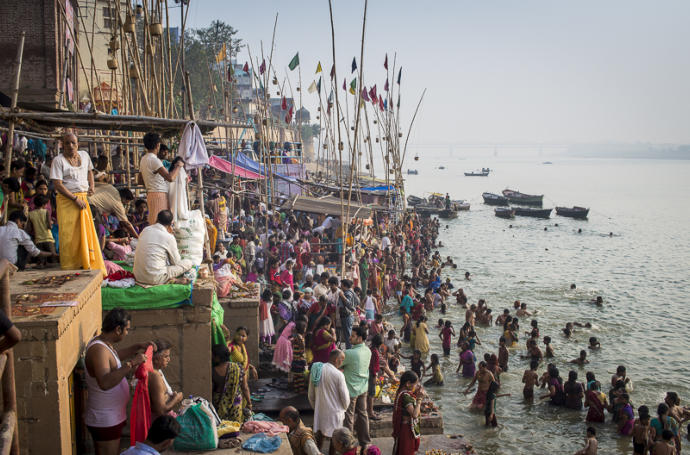
During Kartik Poornima, the final day of Deva-Diwali, it is extremely auspicious to take a bath in the holy Ganges. This
tradition, known as Kartik Snana, is most popular along Panchaganga Ghat.
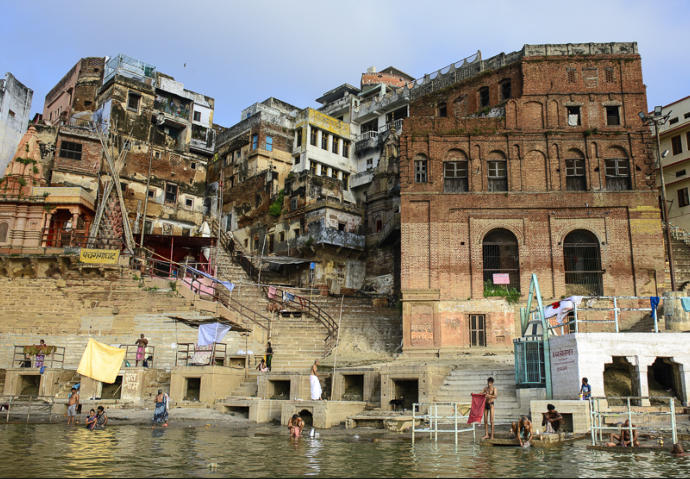
Daily life begins early along the ghats.
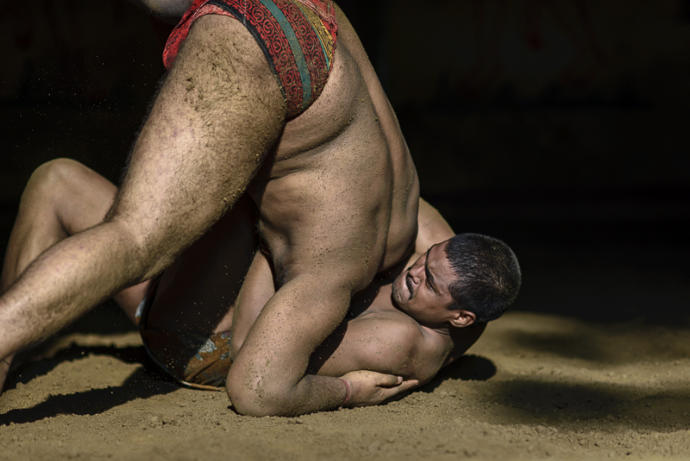
Kusti wrestlers at the Gaya Singh Akhada. There used to be over 500 akhadas (traditional martial arts schools) in
Varanasi; now less than 60 remain.
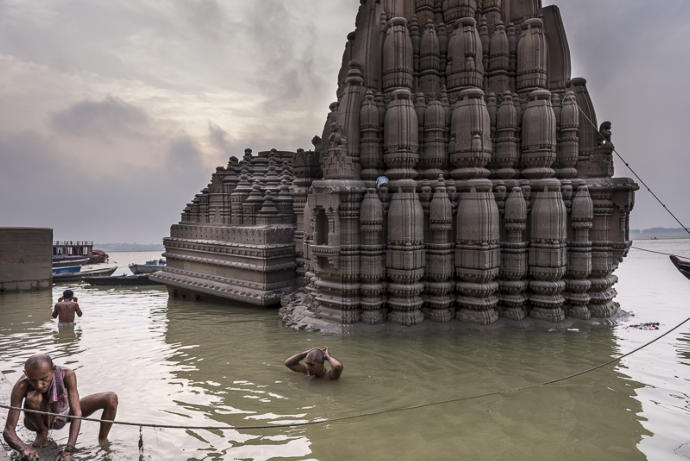
Pilgrims complete their morning puja in the Ganges. The water from this most holy of rivers, brown and muddy from the
monsoon and polluted with the city’s effluence, remains of dead bodies and heavy chemicals from factories, is believed
to purify the bather.
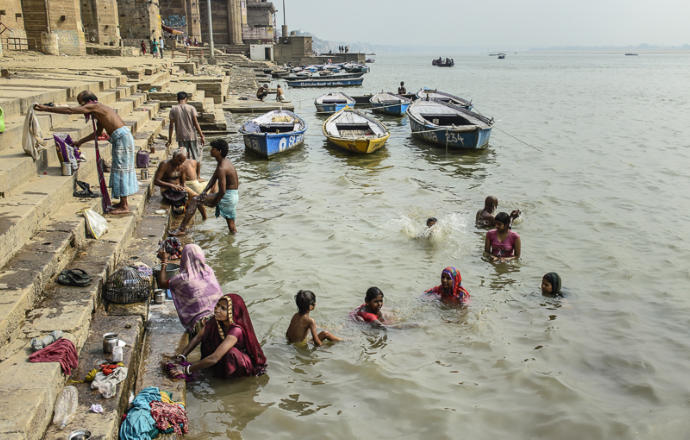
Bathing, playing, washing and floating in and on the Ganges.
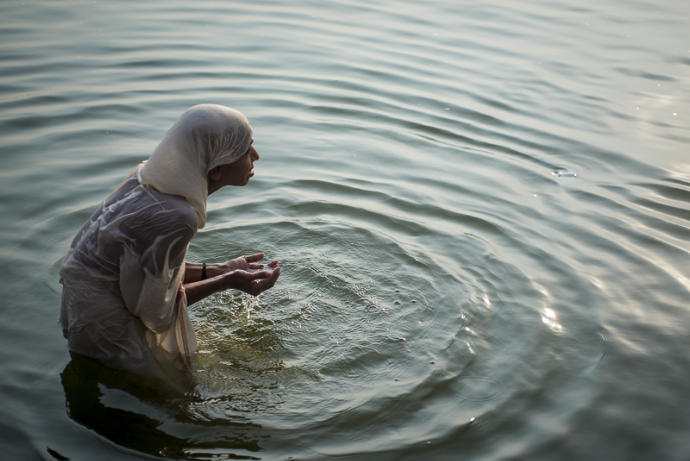
A common practice is the devotional ritual of scooping up holy water from Ganga Maa and offering this nectar of
immortality to departed ancestors.
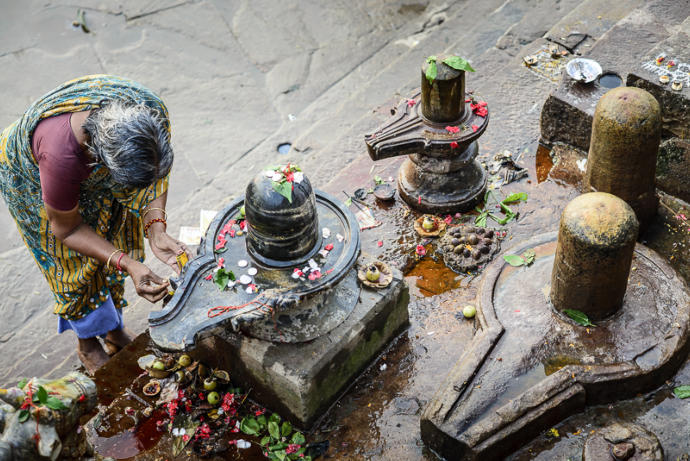
Shiva Linga. Tens of thousands of these aniconical representations of Shiva populate the ghats and galis of Kashi.
Sometimes he appears as a simple phallus, at other times he is accompanied by a yoni, or womb, representing his
consort Shakti.
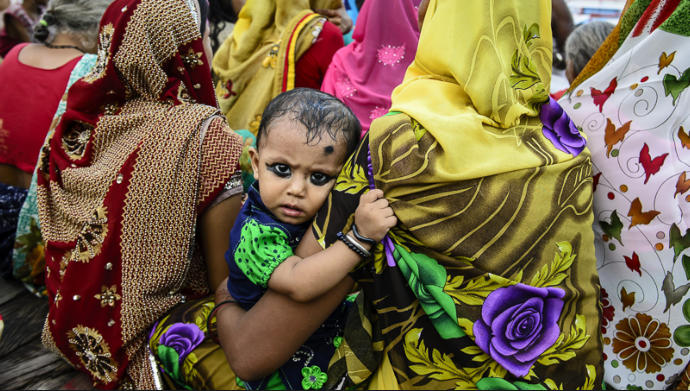
A young pilgrim joins the crowds and colour of Varanasi.
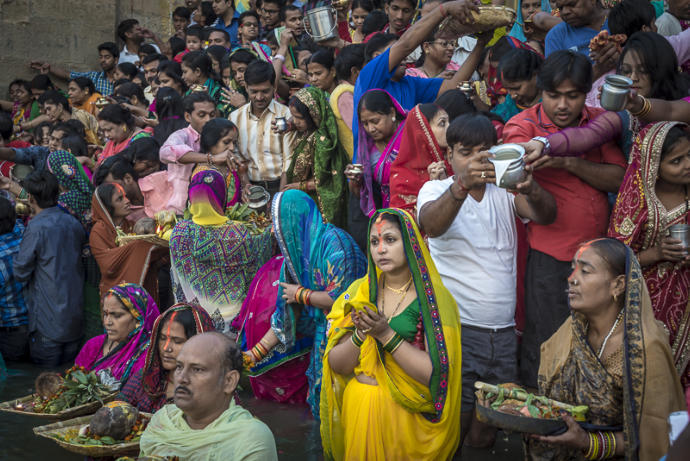
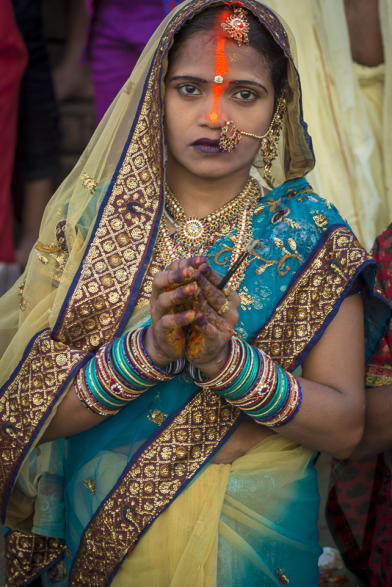
Devotees arriving before dawn along the banks of the Ganges make their offerings to the rising sun. This ancient ritual,
known as Usha Arghya, takes place on the final day of Chhath, a festival dedicated to the sun god Surya and Chhathi
Maiya, his younger wife, known as Usha in the Vedas. Usha means the first sunray of dawn and symbolises the dawn
of divine consciousness in the devotee.
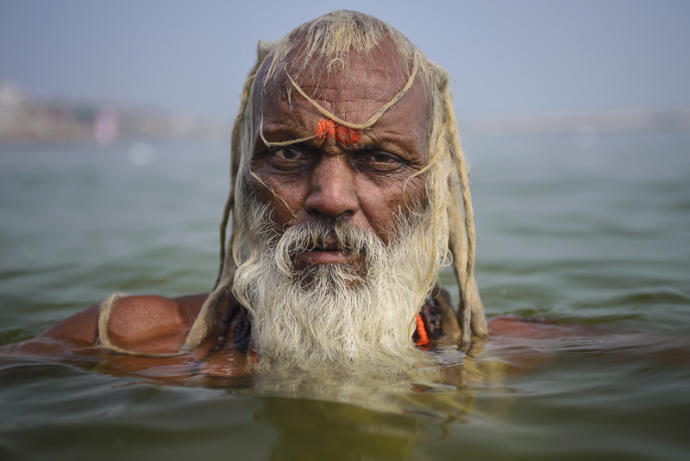
Baba Luxman taking his morning puja. Now aged sixty-five, he is one of the few sadhus along the ghats actually born
in Varanasi. He runs a very popular chai stall along Raja Ghat where he also has his home.
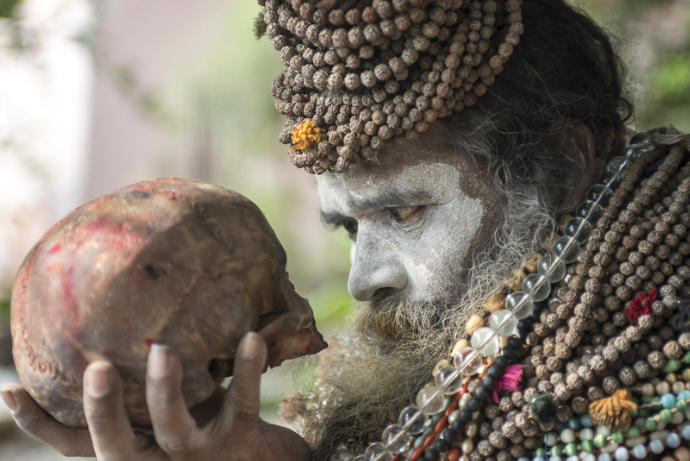
Lali Baba, wearing many of his 540 mala, contemplates a couple of his several skulls.
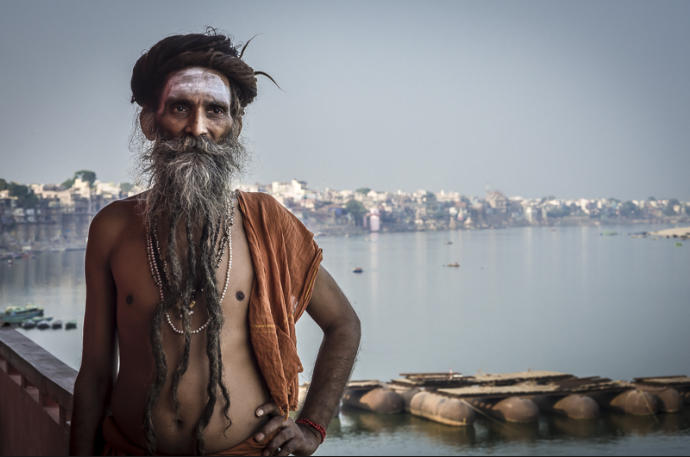
Hensanandsarosati outside the Juna Karar Ashram which he has made his home, having travelled much of India.
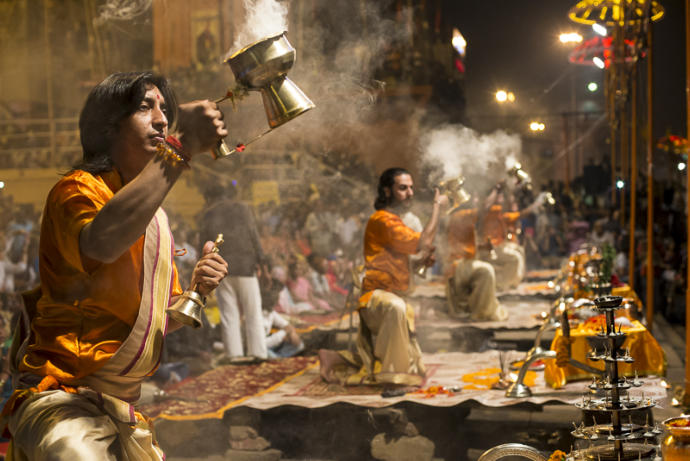
Ganga Aarti takes place every evening along Dashashwamedh Ghat. Also known as Agni Pooja, priests perform a
series of rituals dedicated to Shiva, Ganga, Surya and Agni (fire).

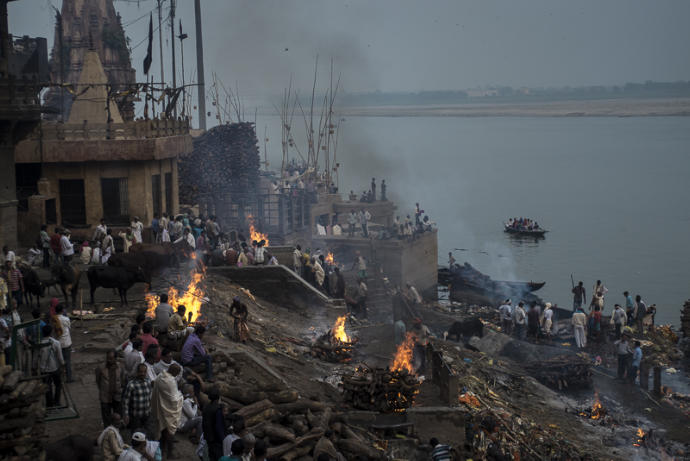
Varanasi has been known as the Mahasamasana (great cremation ground) since ancient times and no other city on
earth is as famous for death. Here the fires burn day and night throughout the year.
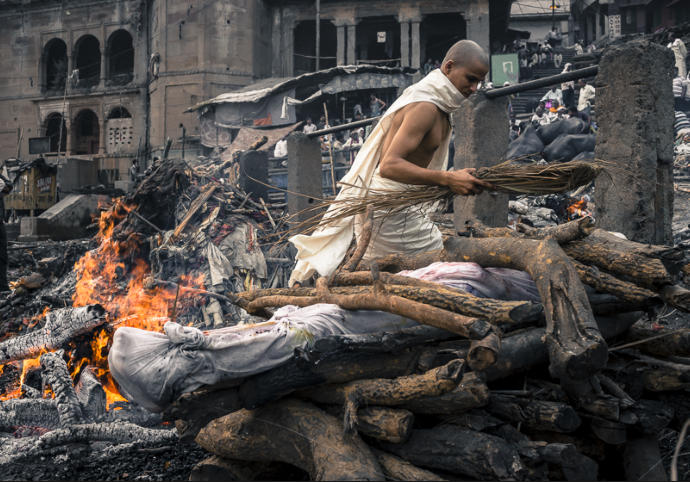
The corpses are carried in on a bamboo litter, dipped in the Ganges one last time, then have sandalwood sawdust
sprinkled over them. A handful of straw is lit from the eternal flame and the tonsured eldest son circles the deceased
five times with the flame to honour the elements – fire, water, earth, air and ether – before lighting the funeral pyre.
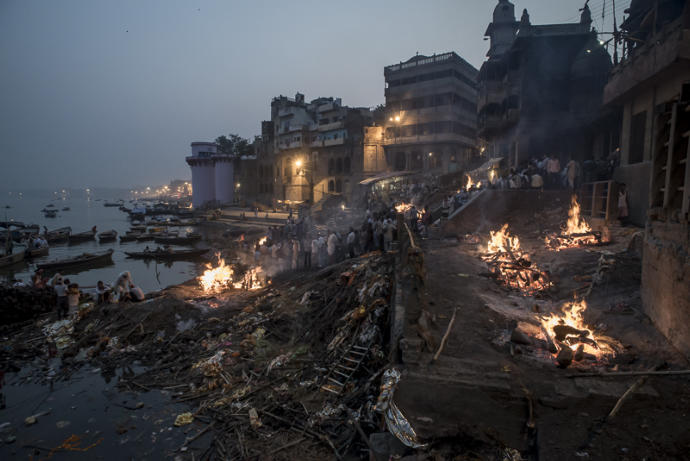
An untouchable caste of Doms supervise the cremation ground, trading in the wood, collecting a tax for the corpses
and tending the eternal sacred fire from which all pyres are lit. They also look after the each pyre, sifting through the
ashes for valuables before consigning the remains to the Ganges.
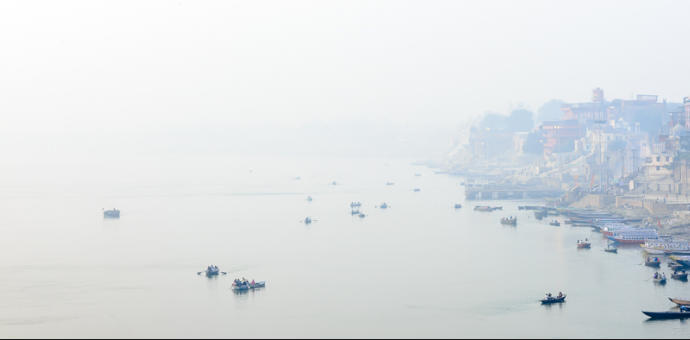
An early morning mist over the Ganges offers a temporary cloak of calm and uniformity to the ghats of Kashi.







